
THE ARTISTS
Mei-Ann Chen, Music Director and conductor
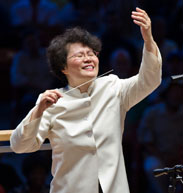 The critical response to Mei-Ann Chen’s Sinfonietta debut in September was unanimous. The Chicago Tribune noted “Chen is a musician for whom ‘dynamic’ and ‘electric’ seem altogether too limiting. Her entire body is a bundle of podium energy; her keen ear and sharp eyes miss nothing.“ while the Sun Times said “… she took the lid off the talented ensemble she’s inherited and helped the players to deliver performances on a higher level than they’ve been able to show in recent years …”
The critical response to Mei-Ann Chen’s Sinfonietta debut in September was unanimous. The Chicago Tribune noted “Chen is a musician for whom ‘dynamic’ and ‘electric’ seem altogether too limiting. Her entire body is a bundle of podium energy; her keen ear and sharp eyes miss nothing.“ while the Sun Times said “… she took the lid off the talented ensemble she’s inherited and helped the players to deliver performances on a higher level than they’ve been able to show in recent years …”
For her second season concert, Mei-Ann has selected works in tune with the cosmos, promising another spectacular evening of music. She has recently returned from Scotland where she was invited to a private tour of the same Garden of Cosmic Speculation that inspired composer Michael Gandolfi. She also recently led a multimedia performance of Astronomical Pictures at an Exhibition in Memphis with visual artist José Francisco Salgado’s film of the same name. Of premiering his new film at Night Sky, Dr. Salgado says “I know it is in great hands with Mei-Ann”.
Maestro Chen’s biography can be found here.
In this video, she discusses the Night Sky program.
Dr. José Francisco Salgado, visual artist
 When José Francisco Salgado was in the third grade in his native Puerto Rico, he came across a book on the first manned mission to the moon. Fascinated, he decided right then and there to study space. Flash forward a few decades, and Salgado is now an internationally regarded astronomer, photographer, and film maker. Moonrise, which will receive its World Premiere at Night Sky, is the third collaboration between Salgado and the Sinfonietta, following Gustav Holst’s The Planets in 2006 and Astronomical Pictures at an Exhibition in 2008.
When José Francisco Salgado was in the third grade in his native Puerto Rico, he came across a book on the first manned mission to the moon. Fascinated, he decided right then and there to study space. Flash forward a few decades, and Salgado is now an internationally regarded astronomer, photographer, and film maker. Moonrise, which will receive its World Premiere at Night Sky, is the third collaboration between Salgado and the Sinfonietta, following Gustav Holst’s The Planets in 2006 and Astronomical Pictures at an Exhibition in 2008.
Salgado traveled the world to photograph the moon and chronicle humanity’s fascination and romance with it. For musical accompaniment, he selected Maurice Ravel’s lovely ballet Daphnis et Chloé.
KV 265, Salgado’s company dedicated to communicating science through art, has a great website.
Get a hint of what to expect from Moonrise with this dramatic video excerpt from The Planets.
Elizabeth Norman, soprano
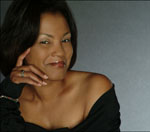 Elizabeth Norman is no stranger to Sinfonietta audiences, having appeared with the orchestra numerous times, including Maestro Paul Freeman’s farewell concert last May.
Elizabeth Norman is no stranger to Sinfonietta audiences, having appeared with the orchestra numerous times, including Maestro Paul Freeman’s farewell concert last May.
Her active career ranges from full stage productions in theater to concert work, operas, solo recitals, chamber music performances, master classes to television and radio recordings. She has performed concerts and oratorios around the world on some of the most well known stages and halls, including the Metropolitan Opera House, in New York City, the White House and the Kennedy Center in Washington D.C., and the Musikverein in Vienna, Austria, as well as in Italy, Israel, and the African countries of Madagascar, Mauritius, Kenya, Tanzania, and Rwanda for the United States Information Agency.
A thorough bio of Elizabeth Norman appears at the Great Black Music Project website.
A VERY SPECIAL PRELUDE:
Mei-Ann Chen speaks with José Francisco Salgado and Michael Gandolfi one hour before curtain time from the stage at Wentz and Symphony Center. Come out early for this unique look at the creative process and the intersection of sight and sound.
THE COMPOSERS
Richard Strauss
Also Sprach Zarathustra op 30 (Einleitung)
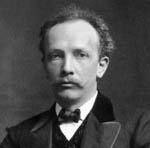 Remember when 2001 was way in the future? If you feel that way, it’s likely because you were watching Stanley Kubrick’s “2001: A Space Odyssey” way back in 1968. The future hasn’t quite turned out like that, but the music Kubrick chose to accompany the great leap forward became a permanent part of popular culture. The fanfare to Richard Strauss’s tone poem is short, but dramatic, and will quickly prepare the audience for the cosmic journey to come.
Remember when 2001 was way in the future? If you feel that way, it’s likely because you were watching Stanley Kubrick’s “2001: A Space Odyssey” way back in 1968. The future hasn’t quite turned out like that, but the music Kubrick chose to accompany the great leap forward became a permanent part of popular culture. The fanfare to Richard Strauss’s tone poem is short, but dramatic, and will quickly prepare the audience for the cosmic journey to come.
Richard Strauss was a leading German composer of the late Romantic and early modern eras. Strauss was also a prominent conductor throughout Germany and Austria. Also Sprach Zarathustra was inspired by Friedrich Nietzsche’s philosophical treatise of the same name.The composer conducted its first performance in Frankfurt in 1896, and it has been part of the classical repertoire ever since.
Strauss’s grandchildren have created a website dedicated to the composer.
Here is a “re-imagined” trailer to Kubrick’s film set to the work.
Michael Gandolfi
The Garden of Cosmic Speculation
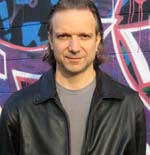 Boston-based composer Michael Gandolfi has a broad range of musical interests encompassing not only contemporary concert music but also jazz, blues and rock, by which routes he first became a musician. The span of his musical investigation is paralleled by his cultural curiosity, resulting in many points of contact between the world of music and other disciplines, including science, film, and theater.
Boston-based composer Michael Gandolfi has a broad range of musical interests encompassing not only contemporary concert music but also jazz, blues and rock, by which routes he first became a musician. The span of his musical investigation is paralleled by his cultural curiosity, resulting in many points of contact between the world of music and other disciplines, including science, film, and theater.
The Garden of Cosmic Speculation is a product of this curiosity. It is inspired by an actual garden in Scotland created by architect and landscape artist Charles Jencks. Among other things, Jencks was exploring a “new grammar of landscape design to bring out the basic elements of nature that recent science has found to underlie the cosmos.” This, in turn, inspired Gandolfi after a visit to the Garden in 2004. It is a sprawling work consisting of 11 movements, but, as Gandolfi notes, “It is intended that any arrangement of movements, in any order, may be selected for a given performance.” The Sinfonietta will perform four of these.
Here is a brief audio excerpt from Soliton Waves, one of the movements being performed at Night Sky:
[audio:https://chicagosinfonietta.org/wp-content/uploads/soliton.mp3|titles=Soliton Waves]
Antonín Dvořák
Rusalka: Song to the Moon
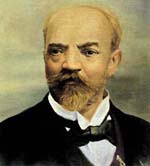 Rusalka is an opera by the Czech composer whose works were a favorite of Sinfonietta founder Paul Freeman. Song to the Moon, an aria from the opera, hinges on a very different contemplation of the mysteries of the cosmos. With a plot reminiscent of Hans Christian Anderson’s Little Mermaid, the opera tells the story of a water nymph named Rusalka’s tragic love for a human, and earth-bound, prince. The aria, one of Dvořák’s most stirring creations, takes place early on in the first act. After telling her father, the Spirit of the Lake, of her desire to leave the water for a human, she is left alone in the moonlight. She asks the moon to tell the prince of her love and that it keep a watchful eye on him until she finds him.
Rusalka is an opera by the Czech composer whose works were a favorite of Sinfonietta founder Paul Freeman. Song to the Moon, an aria from the opera, hinges on a very different contemplation of the mysteries of the cosmos. With a plot reminiscent of Hans Christian Anderson’s Little Mermaid, the opera tells the story of a water nymph named Rusalka’s tragic love for a human, and earth-bound, prince. The aria, one of Dvořák’s most stirring creations, takes place early on in the first act. After telling her father, the Spirit of the Lake, of her desire to leave the water for a human, she is left alone in the moonlight. She asks the moon to tell the prince of her love and that it keep a watchful eye on him until she finds him.
For Night Sky, this romantic aria will be sung by Elizabeth Norman, setting the stage for the Moonrise to come. It will be sung in Czech, but you can find the English translation here.
en_US&start=50″ />
This video transcribes the beautiful melody for violin, played by Joshua Bell.
Maurice Ravel
Daphnis et Chloé (Suites 1 and 2) with Moonrise
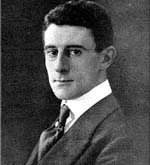 French impressionist composer Maurice Ravel considered his ballet Daphnis et Chloé to be “a choreographic symphony in three parts,” with the aim “to compose a vast musical fresco…”. The music, some of the composer’s most passionate, is widely regarded as some of Ravel’s best, with extraordinarily lush harmonies typical of the impressionist movement in music. Commissioned by Serge Diaghilev’s innovative dance company the Ballets Russes, the work premiered in Paris at the Théâtre du Châtelet in June of 1912 with choreography by Michel Fokine.
French impressionist composer Maurice Ravel considered his ballet Daphnis et Chloé to be “a choreographic symphony in three parts,” with the aim “to compose a vast musical fresco…”. The music, some of the composer’s most passionate, is widely regarded as some of Ravel’s best, with extraordinarily lush harmonies typical of the impressionist movement in music. Commissioned by Serge Diaghilev’s innovative dance company the Ballets Russes, the work premiered in Paris at the Théâtre du Châtelet in June of 1912 with choreography by Michel Fokine.
The Sinfonietta is celebrating the 100th Anniversary of its premiere in heady fashion by assigning the choreography not to dancers, but to the video artistry of José Francisco Salgado. In capturing humanity’s romance with this heavenly body as exemplified by Dvořák’s Song to the Moon, Salgado’s film reflects the tone and tempo of the ballet with the gracefulness of dance.
This video contains a few brief excerpts from Suite No. 2.
en_US&start=50″ />
Researched, edited, and compiled by Don Macica
Design by Ryan Smith